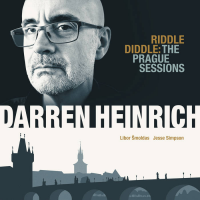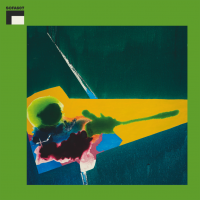Home » Jazz Articles » Getting Into Jazz » : How To Listen: An Introduction to Getting Into Jazz
: How To Listen: An Introduction to Getting Into Jazz
As we go through the individual CDs, you'll get specific pointers about what to listen for in the tracks I've highlighted.
But in general, you'll notice that much of this music follows a standard format. After a brief introduction, one chorus of the song is played by the group's leader—generally a horn player, pianist or guitarist—more or less as it was written. Then that player begins to improvise on the original melody, usually for two or more choruses, after which the other players take turns soloing, fashioning their own improvisations. Then, to close things out, the song is played "straight" once again.
How about repeat listening?
It's essential. You really can't derive the most pleasure from a jazz piece the first time you hear it. After the first playing, you may find what you've heard interesting but perhaps a little monotonous ("It all sounds the same"). The second time you may say, "Oh, yeah, I remember this part, it's really nice." The third time you may say, "I never noticed that little thing before." The fourth time, you may have begun to make a new friend. And by the sixth time, if you're lucky, you may have fallen ln love. Does this remind you of dating?
How do I make sense of the improvised parts?
It's important to understand that a good jazz improviser is an ad hoc songwriter, creating brand new melodies that can be more beautiful than the original. And yet in the midst of all this newness, he or she manages to retain the thread of the original tune.
And that makes for one of the biggest kicks in listening to jazz—following the winding course of the improvisation while keeping the original tune in the back of your mind. Hear how the musician flits away from the original melody, then comes back to it for a moment, then takes off again. Think hummingbird.
Remember too that a good jazz improvisation, despite the spontaneity, has a solid structure. It tells a story from beginning to middle to end. To follow the story, you need to hear the whole thing. Otherwise it's like trying to watch a movie thriller starting in the middle.
But what if I don't know the songs they're playing?
Although some of the tunes are composed by the players, most of the songs that jazz musicians improvise on are from "The Great American Songbook" —compositions by Cole Porter, George Gershwin, Richard Rogers, Harold Arlen, Duke Ellington and the like.
If you don't know a song in one of the CDs, you can sometimes get familiar with it by listening to a non-jazz rendition on YouTube before you tackle the jazz version. That way, in addition to gradually creating a library of jazz CDs, you'll be creating a mental library of beautiful songs.
How will I know if I'm getting this stuff?
Are you starting to love it? Okay, are you liking it at least? Do you find bits of the improvised parts coming back to you later? After a few listenings, can you anticipate what's coming next? All good signs!
Here's a little test you can give yourself. Choose a jazz solo you've become familiar with from one of the CDs in this blog and listen to it from beginning to end. Sounds like an old friend, right? Next day, go back and listen to the same solo, but start it somewhere in the middle. Are you disoriented? Are you thinking, "Where are we, what came before this, where are we going?" That's a good sign, because it shows you've really absorbed and integrated the story the musician is telling. On the other hand, if the second listening sounds just about like the first —a bunch of notes —then the music hasn't yet soaked in.
Could listening to improvised jazz be good for my brain?
I'm not a neuroscientist, but it seems to me that if you're focusing your mind on distinguishing the musical lines played by several instruments at once, or trying to follow an improvisation while keeping the original melody in mind, you're exercising and strengthening the analytical part of your brain. And if at the same time you're absorbing the beauty and excitement of what you're hearing, you're exercising the "feeling" part. It's a one-two punch of a workout. And unlike abdominal crunches, it's actually enjoyable.
Which brings us back to the original idea: listening and loving it.
Tags
PREVIOUS / NEXT
Support All About Jazz
 All About Jazz has been a pillar of jazz since 1995, championing it as an art form and, more importantly, supporting the musicians who make it. Our enduring commitment has made "AAJ" one of the most culturally important websites of its kind, read by hundreds of thousands of fans, musicians and industry figures every month.
All About Jazz has been a pillar of jazz since 1995, championing it as an art form and, more importantly, supporting the musicians who make it. Our enduring commitment has made "AAJ" one of the most culturally important websites of its kind, read by hundreds of thousands of fans, musicians and industry figures every month.


















